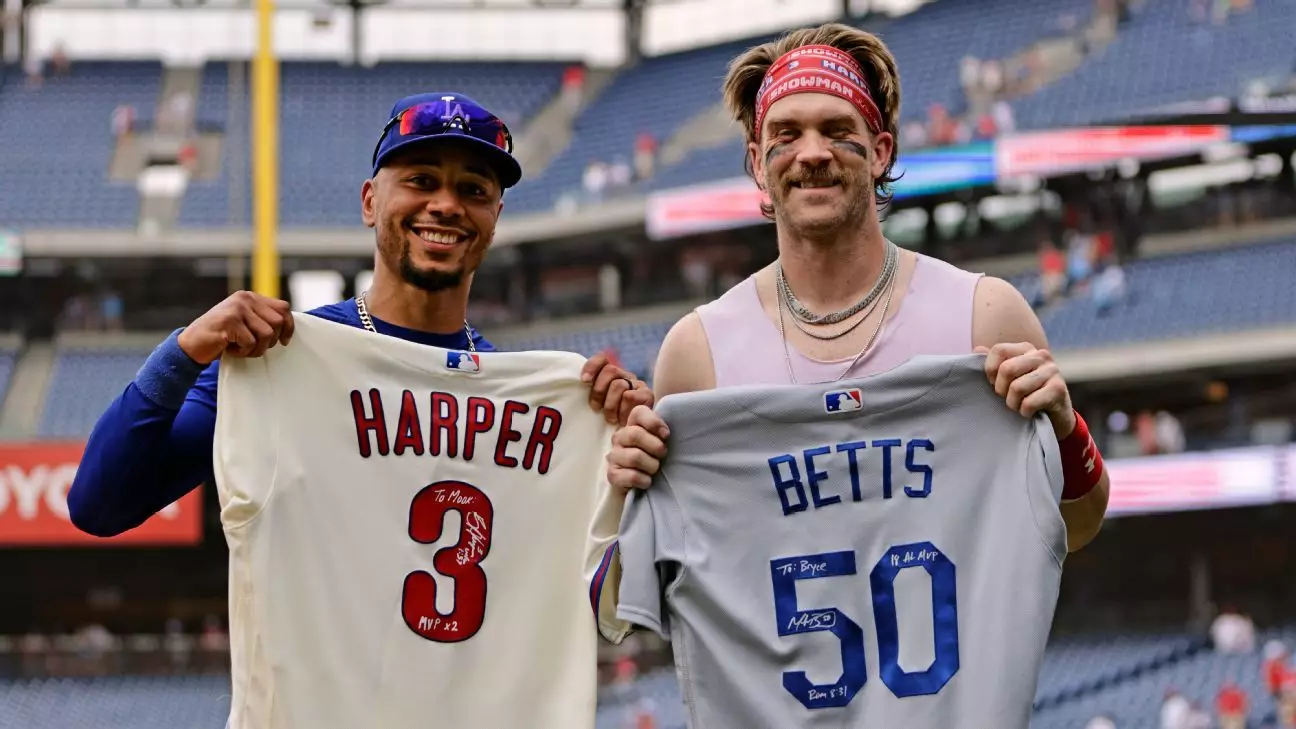In the ever-evolving theater of Major League Baseball (MLB), the topic of payroll inequality and the consequences of lavish spending often dominates discussions among fans, players, and analysts alike. The recent events surrounding the Los Angeles Dodgers, whose exorbitant payroll of $320 million has thrust the team into the spotlight, exemplify the growing divide in talent acquisition and financial capability among franchises. The implications of such spending ripple through the league in various ways, creating both fervent admiration and stark criticism. The discourse surrounding this has evolved into a debate over whether complaints about big spenders stem from jealousy rather than a legitimate concern for competitive balance.
Bryce Harper, the two-time NL MVP and Philadelphia Phillies star, voiced an unambiguous sentiment about those who lament the Dodgers’ financial strategies: “only losers complain.” This striking declaration reinforces the view that while financial disparity exists, successful clubs like the Dodgers demonstrate that the source of strength is not solely in their wallets but in their strategic navigation of the rules of baseball. Rather than carping about the spending power of certain franchises, Harper’s perspective suggests that aspiring teams should lift themselves up rather than dwell in grievance.
The Financial Landscape of MLB
As the MLB’s average salary transcends the $5 million threshold for the first time, the financial dynamics of the league come into sharper focus. Teams like the New York Mets and the Dodgers not only lead in payroll but set the benchmark for what it means to invest heavily in talent. With strategic acquisitions like Blake Snell and Michael Conforto, the Dodgers have ramped up their payroll dramatically by $69 million since last season, underlining their commitment to fielding a championship-caliber roster.
However, the peculiar aspect of deferred payments also complicates the evaluation of these figures. For instance, Shohei Ohtani’s eye-popping contract showcases how financial reporting can sometimes obscure the immediate ramifications of spending, as his current value appears manipulated by future payouts. This might lead to misleading narratives, altering public perception about salaries and competitive balance in the league.
As Harper pointed out, the allure of playing in Los Angeles—a city synonymous with glamour and fame—further complicates the competitive landscape. Players are not only enticed by financial compensation but also by lifestyle and exposure, indicating that a team’s location can have just as much influence as the dollar figures on a contract.
The Role of Player Contracts in a Competitive Market
Harper himself exemplifies the concept of long-term investment in MLB talent. His staggering 13-year, $330 million contract represents a commitment that empowers players not only for themselves but also for their franchise. The Phillies, bolstered by ownership willing to spend, have reaped the rewards of their financial commitment, qualifying for the playoffs in three consecutive seasons. With teams across the league reflecting on spending strategies and the ramifications of inflated salaries, one wonders if this high-stakes environment might propel even more teams to adopt bold financial tactics to remain competitive.
Interestingly, the conversation around salary caps has gained traction, particularly as the league grapples with competitive balance. MLB Commissioner Rob Manfred has acknowledged the concerns emerging from fans, who fret about the sustainability of an unregulated payroll scenario. This discourse raises critical questions: Should there be parameters to prevent corporate greed from overshadowing the integrity of the sport? Or, conversely, should teams be free to pursue their financial ambitions without constraints?
The Future of Baseball in a Money-Driven Era
The emergence of burgeoning salaries reflects a larger narrative about wealth and competition in MLB. Teams like the Dodgers, wielding their sizeable payrolls as both a weapon for victory and an attractor for talent, prompt a re-examination of what competitive balance means in today’s market. These financial dynamics not only create a platform for talent acquisition but also redefine the identity of franchises in the eyes of former players and fans alike.
In this landscape, teams must navigate the fine line between financial spending and the overarching goal of building a cohesive and competitive team. The ambition behind signing lavish contracts—while undeniably a statement of intent—also opens the door to deeper scrutiny. With fans and players alike keeping a keen eye on finance-driven roster strategies, the question lingers: will the pursuit of glory via financial clout lead to a more competitive environment, or will it create an insurmountable divide among franchises in MLB’s landscape? The answers could redefine what it means to be a baseball powerhouse in the years ahead.


Leave a Reply